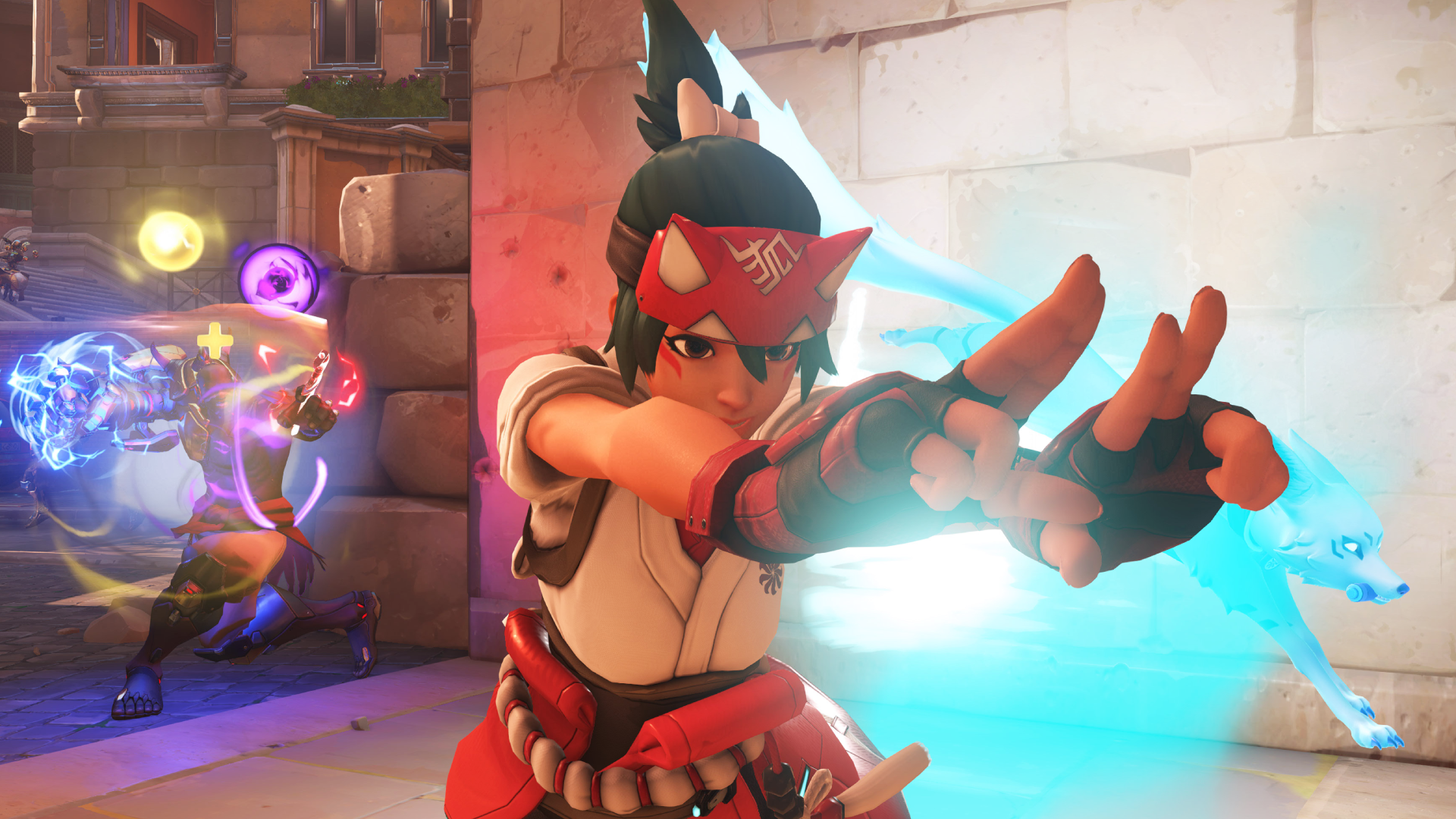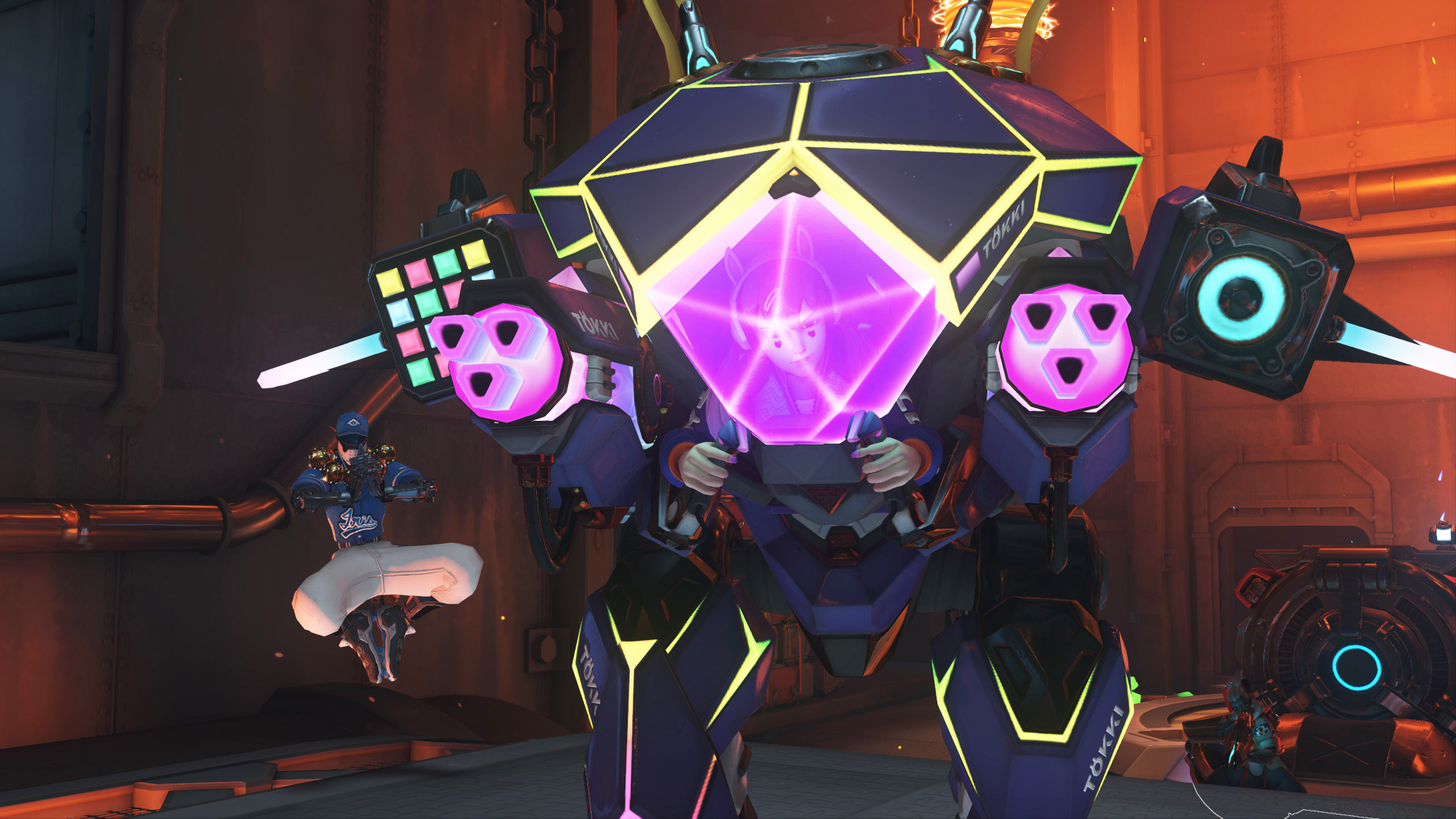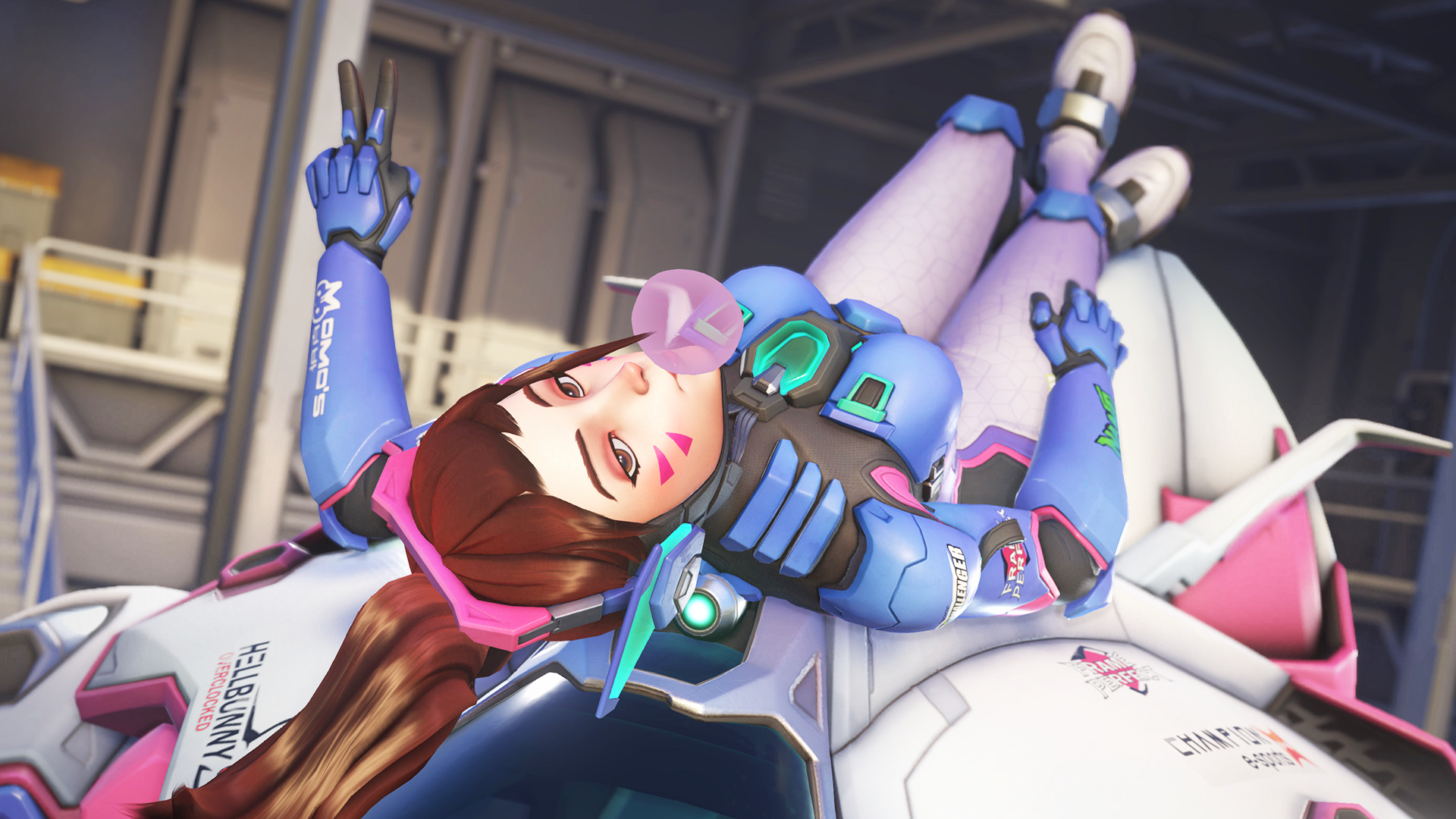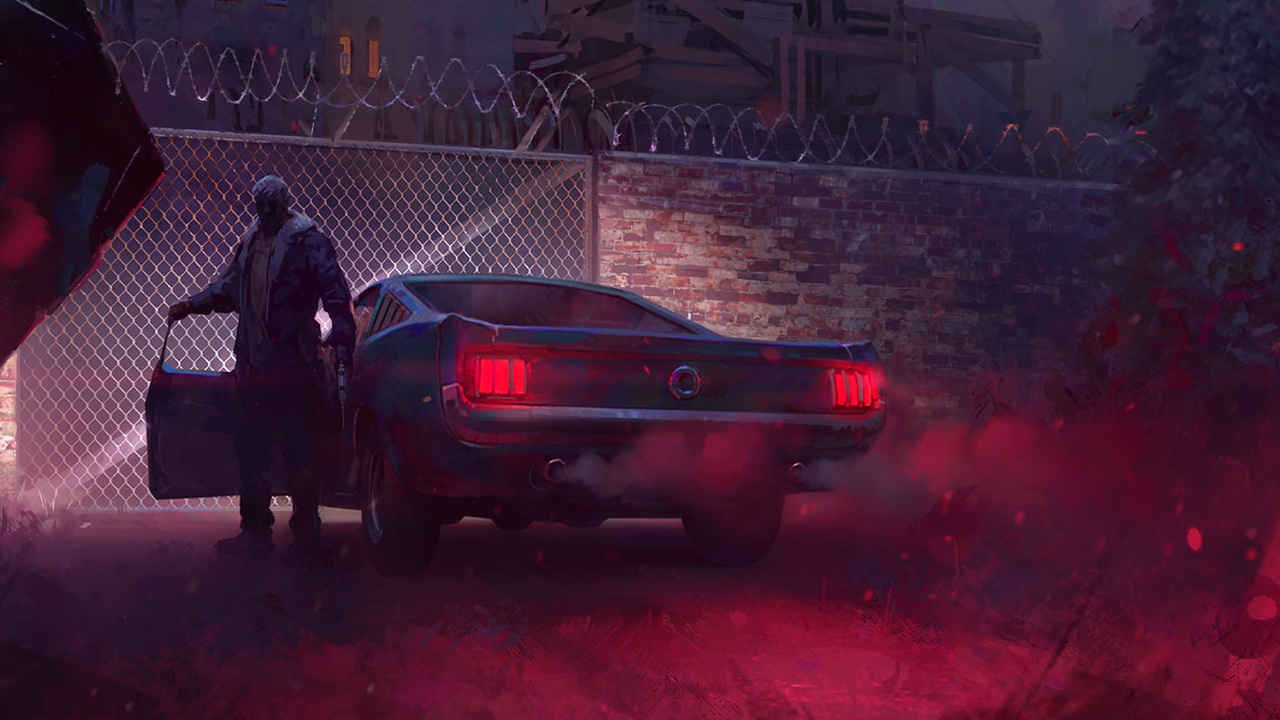Our Verdict
Overwatch 2 revitalizes the stagnant hero shooter, but misunderstands what made it great.
PC Gamer's got your back
What is it? A sci-fi 5 vs. 5 hero shooter set in a near-future Earth.
Expect to pay Free-to-play
Release date: October 4
Developer: Blizzard
Publisher: Activision Blizzard
Reviewed on: RTX 3080, Ryzen 9 3900X, 32GB RAM
Multiplayer? Yes
Link: Official site
It's taken every single cell in my brain to try to determine why Overwatch 2 is a sequel.
As a free-to-play successor to Blizzard's 2016 hero shooter (that also replaces the original game), Overwatch 2 is both reinvigorating and regressive. It's an exciting new reason to play a game that shaped modern shooters and get a glimpse at why nothing in the last six years has bested it. But its biggest changes and invasive monetization system threaten to drain the joy out of it until there's nothing left.
Overwatch 2's greatest strength is that it's still Overwatch. Behind all the updated menus, the battle pass, the challenges, and the reworked maps is the game that demonstrated an alternative FPS, where a variety of skills were acknowledged and rewarded. Despite how much it's stacked on top of it, Blizzard hasn't buried the boldest aspects of the original game.
Overwatch 2 is Overwatch 1 at 1.5X speed. It's the same game, but compressed. Two teams battle over an objective in beautifully rendered, near-future locations around the world. Each side has a tank hero, two damage dealers, and two support. It's an FPS in form, but matches unfold a little differently than they do in most other shooters. Both teams fight to occupy space on the map with all their various hero abilities and ultimates. A tank who charges into the fray is backed by their team of support and DPS who use that aggression to punish enemy mistakes, whether they stepped within range of a killing blow or made themselves vulnerable by misusing all of their abilities.
The predictable rhythm of a match has warped, losing detail in the process.
Team fights are an exchange of resources, punctuated by powerful ultimates that swing it in a new direction. Instead of split-second firefights or large-scale sniper duels, Overwatch fights urge you to think of it like chess. Eliminations are a result of predicting and punishing your opponent's next move. And when you can't, the slow time-to-kill (lengthened by support and tanks) gives you the space to respond.
Overwatch 2 takes the timeline of a match and squeezes it. Its chaotic battles erupt and end slightly, but noticeably, faster than they do in the original game. The intricacies of Overwatch 1's teamwork have been reduced with heaps of changes that let heroes solve problems on their own, empowering selfish play. Many of the heroes across all of the roles can move through the maps faster and deal more damage than ever before. Collaborative strategies still matter—and still supersede individual performance—but the predictable rhythm of a match has warped, losing detail in the process.
Damage control
Overwatch 2 kicks a tank off of both teams. Tanks that were once designed to complement each other have morphed into the equivalent of a Dark Souls boss. Orisa used to sit behind a barrier shield, spew suppressive fire, and yank people out of position with her Halt ability. She was built to be the nucleus of a team, with a co-tank circling around her to cover flanks and off-angles. Now she's shieldless, absurdly resilient, and armed with a spear. Like many Overwatch characters—two of its Japanese heroes are ninja, its Korean hero is an esports player, and one of its Black heroes, Doomfist, is an imposing villain—Orisa has become yet another stereotype that references the young Black inventor who created her in the game's near-future version of Africa. She's no longer the protector of Numbani; she's the aggressor. Orisa, and most of the other tanks, are equipped to deal almost as much damage as a DPS hero if you let them, and they can often turn a fight in their favor on their own.
Keep up to date with the most important stories and the best deals, as picked by the PC Gamer team.
The changes to supports aren't as drastic, but new hero Kiriko suggests that the role is headed in a similar direction. Many of the supports now veer much closer to MOBA design where you debuff enemies and occasionally prevent or soften incoming attacks more often than you heal. Kiriko isn't a pure healer like Mercy or Moira, she's a support who teleports and wall-climbs around the map looking for targets to flick her kunai at, dealing DPS-levels of critical headshot damage. Similarly, when I played as the sniper healer, Ana, I found more success splitting damage and healing more evenly than in the first game. Like tanks, if a support is in an advantageous position and has the skills to land their shots, they can almost single-handedly finish out a team fight.
The DPS category continues the trend. They've been stripped of their crowd control abilities and had their kits sharpened for maximum damage output. Cassidy loses his Flashbang for countering fast flanker heroes for a sticky and homing Magnetic Grenade that simply deals a lot of damage when it goes off. Bastion can now move in his devastating turret form, previously the thing that made him most unique. And Sombra, a hero who fed her team information while invisible and timed ability-disabling hacks for her team to follow up, now has a personal 40% damage buff on hacked targets to do it all herself. Overwatch 2 forgoes friction for the kind of abilities that provide flat increases to a hero's damage output. As frustrating as being hacked by Sombra was in Overwatch 1, it was a necessary tool for a hero that wasn't designed to be an assassin. So much of Overwatch 2's design minimizes the non-lethal abilities with ones that supplement a player's proficiency at controlling their crosshair. This focus on aim as the most important and "fair" skill simplifies the game's fights and filters out the creativity in its DPS heroes.
Spread thin

As the synergistic but distinct roles within Overwatch 2's hero roster begin to consolidate, the necessity of teamwork is diminished. Most of the game's roster is now designed to eliminate the enemy team as fast as possible. The original Overwatch's most skilled players were already playing this way. Overwatch League and Top 500 matches showcased the most lethal heroes in the hands of players who were held back by the ways the game used non-traditional FPS abilities to add friction to every fight. In the last few years, Overwatch's balance began to prefer heroes like Cassidy, Echo, and Soldier: 76, who could consistently send an opponent back to the spawn room in seconds over slow heroes like Junkrat, Symmetra, and Genji, who relied on their teammates to create openings. Now, through sweeping balance changes to most of the heroes and powerful passive role bonuses, Overwatch 2 has fully canonized that playstyle for almost all levels of skill.
In the process, the most distinct heroes have had their strengths and weaknesses blurred so they more closely resemble each other. Bastion's mobile turret form mirrors Soldier: 76's run-and-gun style, Doomfist as a hyper-mobile tank is a xeroxed Winston, and Mercy can now glide in all directions with a wonky new meter system to keep up with the other supports. Many heroes have so many highly mobile and highly lethal abilities that they've become self-sufficient. Tanks and supports used to operate on the edge of Overwatch's core FPS framework, complicating firefights with life-saving and disruptive abilities that had to be worked around. Now, tanks and supports battle in the arena like everyone else, their unique abilities mere footnotes in the saga of a match.
Overwatch 2 sells the illusion that to win, you have to carry your team.
All of these changes make Overwatch 2 a more approachable game than the first one, and more immediately rewarding as a solo player. You can hop in, choose a hero, and intuit your role in the team quickly. But as everyone races to score a kill, counter-play is deemphasized—you can almost always simply eliminate the enemy team faster. Heroes who used to be kept in check by stuns and other crowd control abilities, such as Genji, can now slice through a team before they even know he's in the game. The call and response between the two teams as they exhaust abilities and resources to gain an advantage in the fight can often fragment into one- or two-player skirmishes around the map. Objective modes feel like deathmatches. When most matches end, it's like I stepped out of a concert, ears ringing and hands trembling. It's all adrenaline with little time to think.
Every fight in Overwatch 2 is an audition to be the main character, the hero that will steal the spotlight and clutch it out. It doesn't always happen; sometimes it really is a team-wide effort, but the increase in opportunities for everything to hinge on a single player means a decrease in strategic depth. Overwatch's design thrives on its uneven heroes and roles that lock together like puzzle pieces. Mercy's damage boost amplifies the threat of a Pharah in the sky, scattering the enemy team so that her's can move in. And Wrecking Ball's ability to withstand loads of attacks drains the enemy team of their resources for when a glass cannon hero like Tracer swoops in to assassinate a low-health target.
Instead of highlighting this strategic play as an alternative path to victory for players more interested in teamwork than mechanical acuity, Overwatch 2's relentless pacing causes these interactions to happen so frequently on both teams that their impact is nullified in uncoordinated play. There are far too many engagements where the time it takes to study your opponents and look for mistakes takes way longer than it does to use yours first and win via a surprise attack. Overwatch 2 lets you skewer the layers of strategy and leave it all up to reflexes. And when you find the right opportunities at the right time and execute on them, you're rewarded as if you did it alone.
Even if that's not technically true—experienced players can identify the ways teamwork led to a victory—it illustrates how much Overwatch 2 obscures the subtle dynamics of team play and encourages players to chase their own "pop off" moments. Without any clear indicators of that teamwork, whether via the game's new mid-match scoreboard or the same old post-match Play of the Game clips, Overwatch 2 sells the illusion that to win, you have to carry your team.
Daily grind

That sort of individualism in Overwatch 2 fuels its new, backwards monetization scheme. Overwatch 2's heroes are no longer immediately playable for everyone like they were in the first game. New accounts start with a handful of heroes and have to play around 100 matches to unlock the rest, and current players need to grind to tier 55 (out of 80) in the freemium battle pass to get the newest additions, or spend the $10 to get them instantly. By removing the guarantee that everyone has access to the same heroes, the possibility for synergy within your team is limited and inconsistent. You have no choice but to play for yourself and hope that your team meets you halfway.
To earn XP on the battle pass and Overwatch Coins to spend on cosmetics in the shop, you have to complete daily, weekly, and seasonal challenges. Some of them are as simple as winning a match and others give you specific goals like healing 10,000 health or landing a triple-kill. None of the challenges are so off-topic that you have to grief a match to get them finished, but it was hard to find the motivation to do more than I needed for my daily on nights I had other plans. I'm sure I'm not alone, which has me worried about which of my teammates are there for the grind and which are there for the win. It's easy to earn four or five tiers of the battle pass in a few hours of play, but if you plan on racing to the new hero or grabbing the customizable mythic skin, matches might start to look more like chores than opportunities to adapt and collaborate with your team.
Purely for attaining cosmetic items, the battle pass and the challenges are a slight improvement on Overwatch 1's loot boxes. You have the ability to earn or buy skins, emotes, weapon charms, and more without having to worry about probability. But by locking heroes behind a months-long grind for Overwatch Coins (weekly challenges reward a maximum of 60 and heroes will cost 2,000), both systems start to chisel away parts of the core game that's already on the verge of being hollowed out.
The commodification of heroes and the way it influences how you play the game almost makes me want loot boxes back.
Overwatch 2's monetization tries to mimic contemporary free-to-play shooters like Valorant and Apex Legends, but hasn't convinced me why it had to in the first place, especially with how unnecessary all of the new systems seem to be. Overwatch's strategic depth, variety of heroes, and fun cosmetics are enough to keep my attention. The battle pass and challenges complicate progression and introduce FOMO to incentivize you to pay money or spend loads of time grinding.
A better version of Overwatch 2 is a game that keeps the structure of the original, expands it with PvE, and restarts its regular release schedule for new heroes, maps, and modes. Overwatch 1's biggest problem was a lack of regular new toys to play with and an unfulfilled promise to add story and characterization to a cast of heroes that you wanted to learn more about. Overwatch 2 misinterprets the problem and delivers an overly complicated solution. The free-to-play grind for currency to buy cosmetics is conceptually more fair, but the commodification of heroes and the way it influences how you play the game almost makes me want loot boxes back.
Not dead yet
Overwatch 2 could have launched in a more stable state, too. Even apart from server queues and DDoS attacks, it's a mess. UI elements overlap each other, navigating all of the menus is a hassle, and players have reported tons of bugs, from being able to endlessly spam Bastion's ultimate ability to having most of the heroes locked as if you were a new player. Once I was in a match I was able to hit a consistent 144 fps and keep high graphical settings on without any stuttering or crashing. But that doesn't seem to be the case for everyone: I've seen reports of blue screens, frequent audio glitches, and inexplicable mouse lag.
Blizzard has issued several hotfixes and patches that attempt to clean the game up, and said it will look to smooth out any balance issues in December, when Season 2 starts. Overwatch 2 is officially a live service game. Rough starts can be fixed with time and it's possible that its worrying obsession with 'solo carry potential' and its grindy battle pass could be addressed. The Overwatch I love is still in there. It's stretched thin, but Blizzard's commitment to supporting it has made me more optimistic than the worst periods of the original game, when it was nearly stagnant.
There are still moments where I've salvaged a losing game with a sneaky Bastion as my team distracted them on the objective, or Nano Boosted a Pharah in the last seconds of a game to eke out a win. All those weird and brilliant interactions that can happen between the heroes is why Overwatch is still unparalleled. And having a lot of friends online and ready to group up again has reminded me what it was like when the game had enough new material to make everyone eager to experiment. Overwatch 2 has repeatedly brought me back to the joy of playing Overwatch at its peak in 2017 and early 2018 despite how so much of its design tries to sand those parts down.
Overwatch 2 could have launched as a much better game and a much more ambitious one. Like the original in 2016, it could have been an FPS for the sort of players and skill sets that other shooters don't often make room for. Instead, it's a confusing sequel that sacrifices its best parts as it transitions to a free-to-play model. The original Overwatch is too robust and too distinct to be completely erased and it's why the sequel remains compelling in spite of itself. But the live service model leaves it in a fragile state. Close as it is to a fully reinvigorated sequel to one of the best shooters in the last decade, it's just as close to collapsing as the pillars of its original design get knocked out.
Overwatch 2 revitalizes the stagnant hero shooter, but misunderstands what made it great.
Tyler has covered videogames and PC hardware for 15 years. He regularly spends time playing and reporting on games like Diablo 4, Elden Ring, Overwatch 2, and Final Fantasy 14. While his specialty is in action RPGs and MMOs, he's driven to cover all sorts of games whether they're broken, beautiful, or bizarre.


